In this blog “Valley of Flowers The Best Time to Visit” experience the breathtaking beauty of the Valley of Flowers, a UNESCO World Heritage site nestled in the Himalayas of Uttarakhand. Discover the vibrant alpine meadows teeming with diverse flora and fauna, including many endangered species. Plan your visit during the monsoon season to witness the valley in full bloom, a spectacle of colors and fragrances unlike any other.
Trek through this natural paradise, immersing yourself in its serene surroundings while supporting conservation efforts to preserve its ecological significance. Choose sustainable tourism practices to ensure a memorable journey while respecting the delicate balance of nature. Explore the Valley of Flowers and embark on a transformative experience filled with awe and appreciation for the wonders of our natural world.
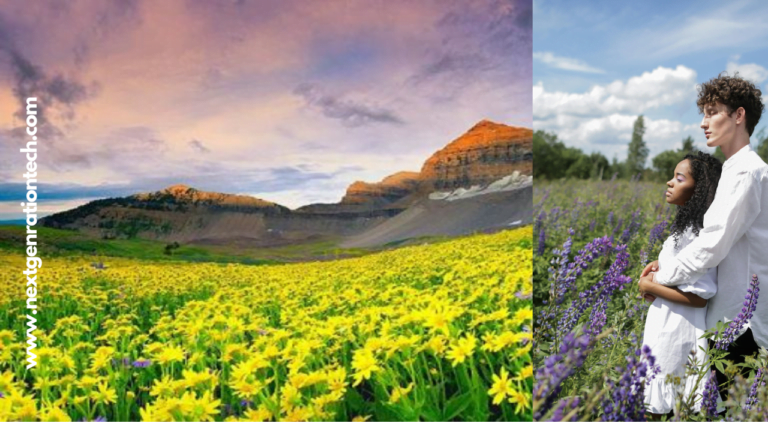
Table of Contents
Introduction: Valley of Flowers The Best Time to Visit
The Valley of Flowers, nestled amidst the majestic Himalayas, stands as a testament to nature’s grandeur. Recognized as a UNESCO World Heritage Site, this expanse of alpine meadows boasts unparalleled biodiversity, showcasing a rich tapestry of flora and fauna found nowhere else. Trekking through Uttarakhand’s rugged terrain, visitors are greeted by a kaleidoscope of colors, with vibrant blooms painting the landscape in hues of pink, blue, and yellow.
During the monsoon season, when the valley comes alive with a symphony of raindrops, endangered species find refuge in this sanctuary. Here, conservation efforts play a crucial role in preserving delicate ecosystems, ensuring the survival of rare and endangered plants and animals.
Embarking on this transformative journey requires more than just admiration; it demands responsible tourism practices. By treading lightly and respecting the delicate balance of nature, visitors can forge a deeper connection with the Valley of Flowers. Choosing the best time to visit ensures optimal conditions for exploration while minimizing ecological impact.
Ultimately, a sojourn to the Valley of Flowers offers more than just breathtaking vistas; it provides an opportunity to reconnect with the natural world, fostering a sense of awe and appreciation for its wonders. Through sustainable tourism and a reverence for biodiversity, each visitor contributes to the preservation of this ecological marvel for generations to come.
Understanding the Best Time to Visit
Valley of Flowers Weather
Before embarking on your journey to the Valley of Flowers weather, it’s crucial to understand the prevailing conditions. The region experiences distinct seasons, including a harsh winter and a brief summer. The best time to visit coincides with the summer months when the weather is mild, and the flora is in full bloom.
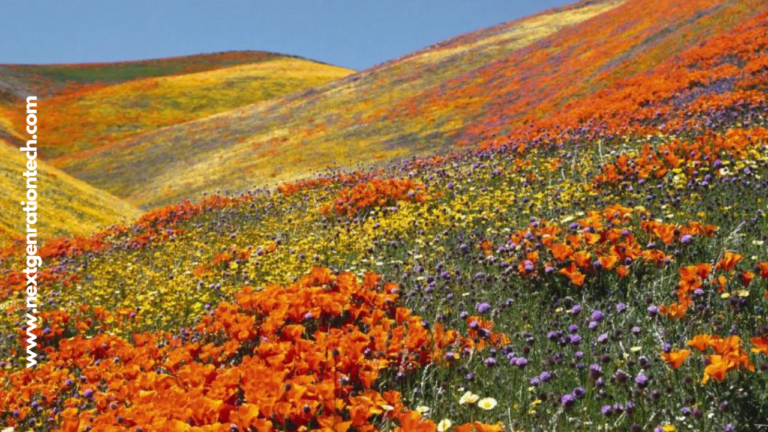
Valley of Flowers Temperature
The valley of flowers temperature varies depending on the season. During the summer months, from May to June, the daytime temperature ranges from 15°C to 20°C (59°F to 68°F), offering pleasant weather for trekking and exploration. In July and August, which constitute the monsoon season, temperatures range from 10°C to 15°C (50°F to 59°F), with frequent rainfall contributing to the lush greenery and blooming flowers. September marks the beginning of autumn, with temperatures dropping slightly to around 5°C to 10°C (41°F to 50°F), signaling the end of the trekking season. It’s essential to be prepared for temperature fluctuations and carry appropriate clothing layers while visiting the Valley of Flowers to ensure a comfortable and enjoyable experience amidst its natural splendor.
Best Season to Visit Valley of Flowers is Blooming Season
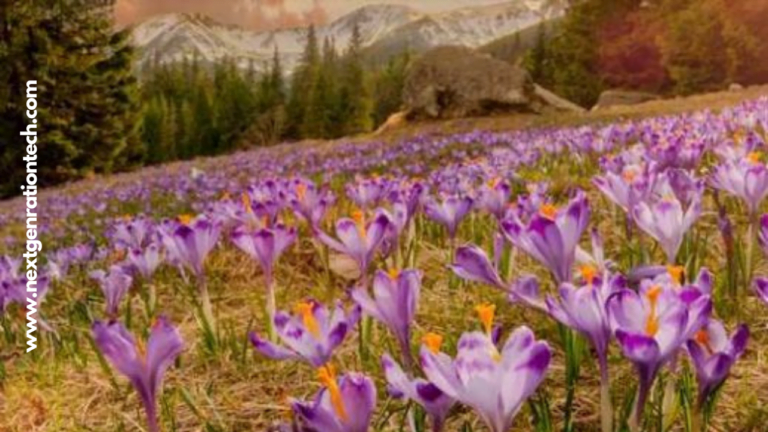
Exploring the Valley
Best Season to Visit Valley of Flowers:The Valley of Flowers is best seen during its flowering season, which runs from July to September. During this time, the site is transformed into a kaleidoscope of colors. This period marks the peak of floral diversity, with countless species of wildflowers carpeting the valley floor. To witness this natural spectacle, plan your visit accordingly, aiming for the months when the flowers are in their prime.
You may also like:
(i)Rudraprayag to Kedarnath Distance Beyond the Numbers Discover the Wonder (ii)Naina Devi Mandir Nainital नैना देवी मंदिर इस धार्मिक स्थल के पीछे की गुप्त बातें (iii)Kainchi Dham Miracles Explored in 2024: Unraveling History, Location
Flora and Fauna
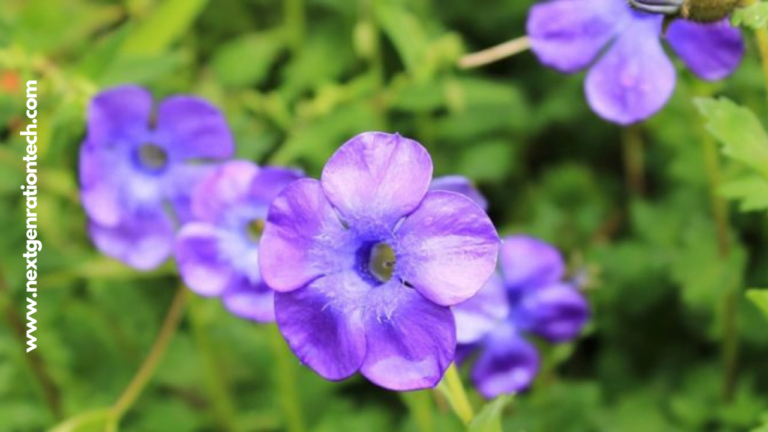
The Valley of Flowers is renowned for its rich biodiversity, housing rare and endemic plant species. As you traverse the meandering trails, you’ll encounter a mesmerizing array of alpine flowers, including the iconic blue poppy, brahma kamal, and saxifrages. Keep an eye out for elusive wildlife such as the Himalayan black bear, snow leopard, and musk deer, adding to the allure of this pristine ecosystem.
Valley of Flowers Trek
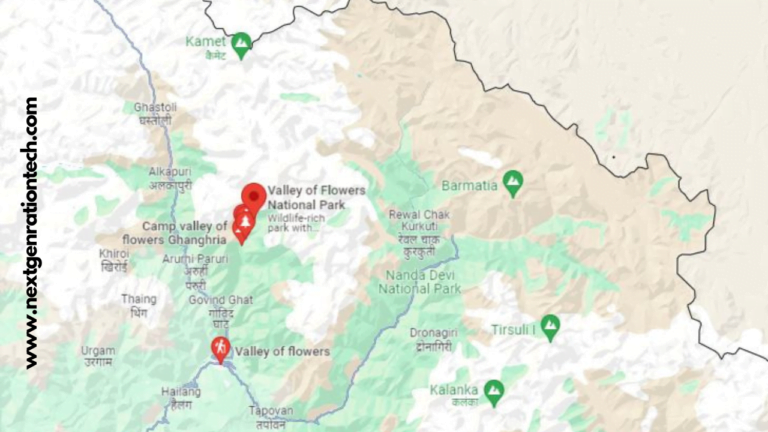
The Valley of Flowers trek is a breathtaking journey through one of India’s most enchanting natural wonders. To find the Valley of Flowers trek selection is one of the major steps to moving on the Garhwal Himalayas of Uttarakhand, this trek offers adventurers a chance to explore a vibrant tapestry of alpine meadows, cascading waterfalls, and diverse flora and fauna.
Exploring the Valley of Flowers involves trekking through rugged terrain and steep slopes. Several trekking routes cater to varying fitness levels, ranging from strolls to challenging ascents. Whether you opt for the traditional route from Govindghat or the more adventurous approach via Hemkund Sahib, each path offers unparalleled views of the surrounding peaks and valleys.
The total trekking distance from Govindghat to the Valley of Flowers is approximately 17 kilometers (around 10.5 miles) one way. This distance covers the entire trekking route from the base camp at Govindghat to the entrance of the Valley of Flowers. Along the way, trekkers pass through picturesque villages like Pulna and Ghangaria, where they can rest and acclimatize to the altitude.
The trail is well-marked and relatively moderate in difficulty, making it suitable for trekkers of varying fitness levels. However, it’s essential to pace oneself and stay hydrated, especially considering the altitude gain and varying terrain. Overall, the trek offers a rewarding journey through stunning landscapes, diverse flora, and a glimpse into the natural beauty of the Himalayas. However, it is essential to be prepared for altitude changes and varying weather conditions.
Preparing for the Trip
Permits and Permissions
Before embarking on your expedition, ensure you obtain the necessary permits and permissions. The Valley of Flowers National Park requires visitors to acquire an entry permit, obtainable from the forest department office in Joshimath or online through the official portal. Additionally, trekking permits may be required for certain routes, so be sure to research and plan accordingly.
Packing Essentials
Packing the right gear and essentials is essential for a successful trip to the Valley of Flowers. Ensure you bring sturdy hiking boots, comfortable clothing suitable for variable weather conditions, sunscreen, insect repellent, and a first-aid kit. Don’t forget to carry sufficient water and snacks to stay hydrated and energized throughout your journey.
Sustainable Tourism Practices
Leave No Trace Principles
Preserving the pristine beauty of the Flowers Valley requires practicing responsible tourism. Adhere to the Leave No Trace principles by minimizing your impact on the environment, disposing of waste properly, and refraining from picking or trampling flowers. Respect the fragile ecosystem and leave the valley as you found it, ensuring future generations can enjoy its splendor.
Respect for Wildlife
While exploring the Valley of Flowers, maintain a respectful distance from wildlife and refrain from feeding or disturbing them. Observe animals from a distance using binoculars or a camera lens, allowing them to roam undisturbed in their natural habitat. By showing reverence for the region’s fauna, you contribute to the preservation of its delicate ecological balance.
Alternative Attractions Nearby
Hemkund Sahib
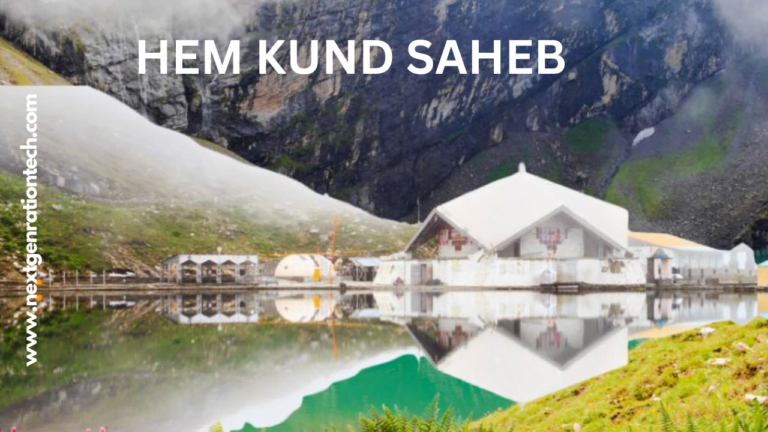
Adjacent to the Valley of Flowers lies Hemkund Sahib, a revered Sikh pilgrimage site nestled at an altitude of over 4,300 meters. Surrounded by snow-capped peaks and crystal-clear lakes, Hemkund Sahib offers spiritual solace amidst breathtaking natural beauty. Pay homage at the gurdwara and immerse yourself in the tranquil ambiance of this sacred sanctuary.
Badrinath Temple

For those seeking cultural enrichment, a visit to the nearby town of Badrinath is highly recommended. Home to the iconic Badrinath Temple, dedicated to Lord Vishnu, this holy site attracts devotees and pilgrims from far and wide. Marvel at the intricate architecture, partake in religious rituals, and soak in the spiritual aura of this revered pilgrimage destination.
Safety Tips for Visitors
Altitude Sickness
The high altitude of the Valley of Flowers poses a risk of altitude sickness, especially for those not acclimatized to such elevations. Take adequate precautions by ascending gradually, staying hydrated, and recognizing the symptoms of altitude sickness, such as headaches, nausea, and dizziness. If symptoms persist or worsen, descend to lower altitudes immediately and seek medical attention.
Emergency Contacts
Before starting on your journey, make a note of emergency contacts, including local authorities, medical facilities, and rescue services. In case of unforeseen circumstances or emergencies, knowing whom to contact can expedite assistance and ensure your safety and well-being.
How to Reach Valley of Flowers
Reaching the flowers Valley, in Garhwal Himalayas of Uttarakhand, offers adventurers multiple transportation options, ensuring accessibility for travelers from various corners of the world. Whether by road, rail, or air, each mode of transportation presents its unique charms and challenges.
Road:
Setting out on a road trip to the Valley ensures an adventure filled with awe-inspiring landscapes and winding mountainous routes. The journey typically commences from major cities like Delhi, Lucknow, Chandigarh, Mumbai, Kolkata, or Dehradun, guiding travelers through charming towns such as Rishikesh, Joshimath, and Govindghat. Starting from Govindghat, which serves as the base camp for trekkers, a picturesque trek spanning approximately 16 kilometers unfolds, meandering through lush meadows and dense forests to unveil the enchanting beauty of the valley.
Rail:
For those seeking a blend of comfort and convenience, the rail network offers an alternative route to reach the Valley of Flowers. The nearest railway station to the valley is Rishikesh, situated approximately 273 kilometers away. From Rishikesh, travelers can hire taxis or board local buses to reach Joshimath or Govindghat, the starting points for the trek to the valley. The rail journey treats passengers to panoramic views of the Himalayas, lush valleys, and glistening rivers, setting the stage for an unforgettable adventure ahead.
Air:
For travelers short on time or seeking a quicker mode of transportation, air travel provides a swift yet scenic route to the Valley of Flowers. The nearest airport to the valley is Jolly Grant Airport in Dehradun, located approximately 295 kilometers away. Upon landing, travelers can hire taxis or avail of bus services to reach Joshimath or Govindghat, from where the trek to the valley commences. The aerial approach offers bird’s-eye views of the majestic Himalayan peaks and verdant valleys, offering a tantalizing glimpse of the natural wonders awaiting exploration.
Overall, whether by road, rail, or air, the journey to the Valley of Flowers is an adventure, promising travelers unparalleled vistas, cultural experiences, and an appointment with nature’s grandeur.
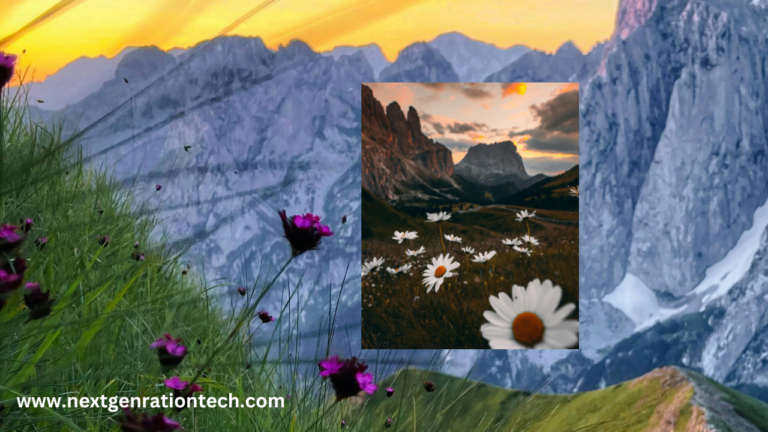
Conclusion
The Valley of Flowers, with its unparalleled natural beauty and ecological significance, offers a transformative experience for visitors. By choosing the best time to visit, adopting sustainable tourism practices, and respecting the region’s flora and fauna, you can embark on a memorable journey filled with awe and appreciation for the wonders of nature.
Frequently Asked Questions (FAQ)
In Uttarakhand, the ideal time to visit the Valley of Flowers is from July until mid-August. The valley is only accessible from June to October.
- To prevent altitude sickness, ascend gradually, stay hydrated, and be aware of the symptoms. Descend to lower altitudes if symptoms persist.
- Yes, nearby attractions include Hemkund Sahib, a Sikh pilgrimage site, and Badrinath Temple, a revered Hindu temple dedicated to Lord Vishnu.
While trekking is permitted, certain areas are protected to conserve fragile ecosystems. Visitors are encouraged to follow designated trails and adhere to conservation guidelines.
The trek varies in difficulty, with some sections being moderate while others require a higher level of fitness. It’s essential to be adequately prepared and acclimatized before embarking on the journey.
Yes, photography is allowed, and visitors are encouraged to capture the beauty of the valley responsibly, without causing harm to the environment or disturbing wildlife.
Conservation efforts include habitat restoration, species monitoring, and promoting sustainable tourism practices. Local communities, government agencies, and conservation organizations work together to ensure the valley’s preservation.
Choose the Right Time to Visit:
Plan your trip between July and September when the valley is in full bloom.
Avoid the monsoon season (July-August) if you’re concerned about heavy rainfall.
Research Permits and Regulations:
Check if any permits are required for entry into the Valley of Flowers.
Familiarize yourself with trekking regulations and conservation guidelines.
Decide on the Trekking Route:
Choose a trekking route based on your fitness level and duration of the trip.
Popular routes include Govind Ghat to Ghangaria, followed by a trek to the Valley of Flowers.
Book Accommodation in Advance:
Reserve accommodation in Ghangaria well in advance, as options are limited and fill up quickly during peak season.
Consider camping options if you prefer a more rustic experience.
Pack Appropriately:
Pack light but essential items such as trekking gear, sturdy footwear, warm clothing, rain gear, sunscreen, insect repellent, and a first-aid kit.
Don’t forget to carry a camera to capture the breathtaking scenery.
Plan for Altitude Sickness:
Acclimatize yourself to the high altitude by spending a day or two in Ghangaria before trekking to the Valley of Flowers.
Avoid drinking, stay hydrated, and pay attention to your body’s cues.
Arrange Transportation:
Arrange transportation from your starting point (e.g., Haridwar or Rishikesh) to Govind Ghat, the base camp for the trek.
Consider hiring a guide or joining a trekking group for added convenience and safety.
Respect Nature and Wildlife:
Follow designated trails and avoid trampling on delicate flora.
Do not disturb wildlife or attempt to pick flowers or plants.
Stay Informed About Weather Conditions:
Keep track of weather forecasts and be prepared for sudden changes in weather, especially in mountainous regions.
Leave No Trace:
Practice Leave No Trace principles by carrying out all your trash and leaving the valley as pristine as you found it.
Honor the regional traditions and culture.
Budget Wisely:
Estimate your expenses for transportation, accommodation, permits, and meals.
Keep enough cash on you because there might not be many ATMs in distant locations.
Stay Flexible:
Be prepared for unforeseen circumstances such as weather delays or changes in plans.
Stay flexible and embrace the adventure of exploring the Valley offlowers.


Fastidious respond in return off this difficulty with
real arguments annd explaining the whole thing concerning that. https://Www.Waste-Ndc.pro/community/profile/tressa79906983/
Pingback: Hemkund Sahib Yatra 2024: Gateway to the Divine in the Heart